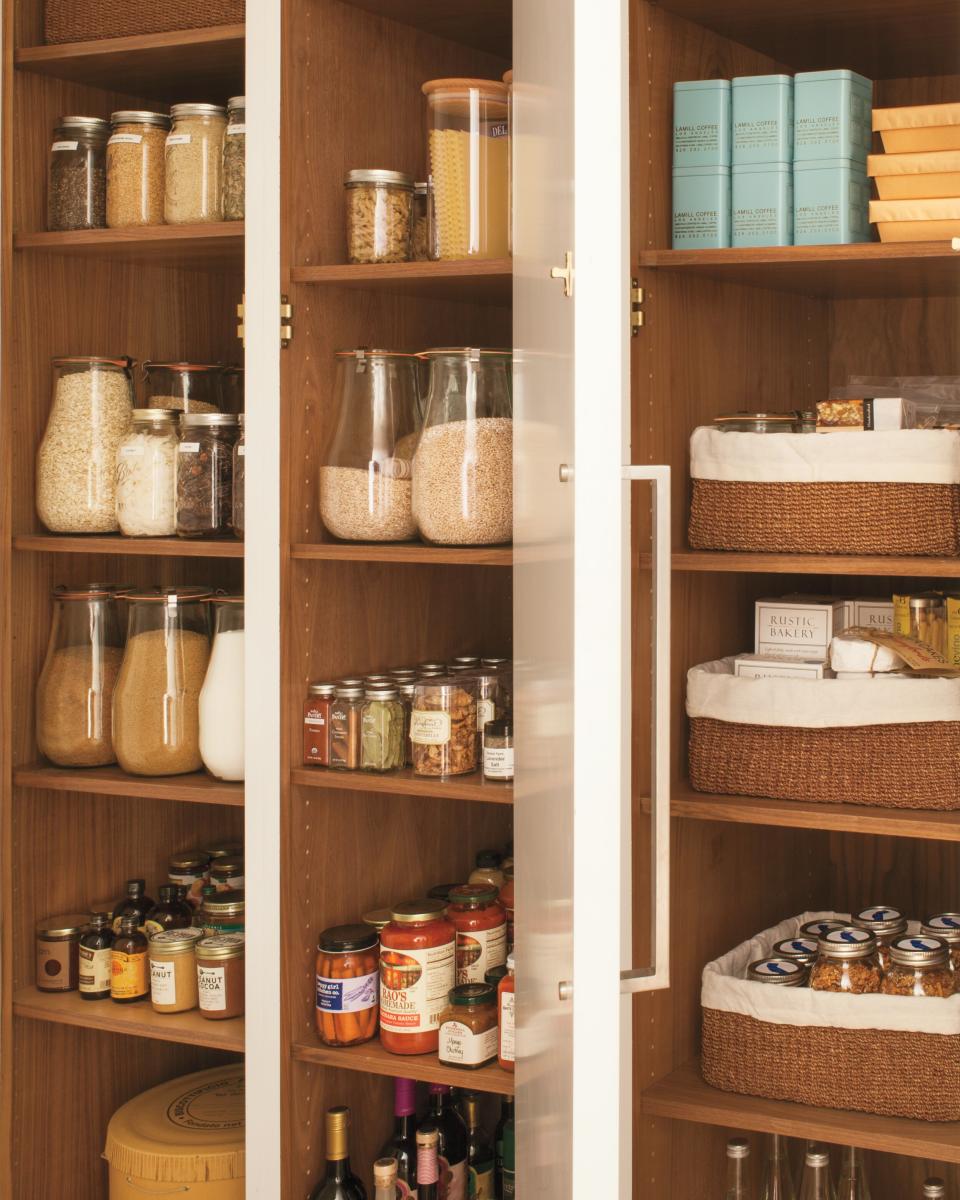How to Protect Your Pantry Staples from Mold and Pests
Dotdash Meredith and Yahoo Inc. may earn commission or revenue on some items through the links below.

Lisa Romerein
An array of non-perishable food like pasta, rice, flour, and cereal displayed in matching containers is more than just a pretty pantry picture. According to Meredith Carothers, technical information specialist for the Office of Public Affairs and Consumer Education at the USDA, storing non-perishable goods in airtight containers is the best way to maintain their freshness and keep out pests, mold, and other forms of bacteria. "People may try to keep their kitchens clean but sometimes we can't control things like pests or bugs. If you don't seal your food well, your food becomes more susceptible to bugs or pests invading them," says Carothers.
Rather than storing flour in its original paper packaging, which pests can chew through, transfer the contents to an airtight container, such as OXO Good Grips Five Piece POP Container Set ($49.95, amazon.com). "If you have flour in its normal package and fold it over, that type of situation is more unsafe than putting it in a plastic bag or airtight container," says Carothers. And if you discover bugs in your food, discard the entire package because they can lay eggs throughout the rest of the product.
Related: The Right Way to Store Pantry Essentials (Even If You Don't Have a Pantry!)
Even if an ingredient comes in a sturdy container, such as a box of pasta or cereal, Carothers recommends transferring any remaining contents to an airtight container once it's been opened. Canned goods like beans or soup that have been opened should also be poured into a sealed container to extend their longevity and prevent mold.
The USDA also recommends storing non-perishables away from heat sources, such as in a cabinet over the stove or close to a refrigerator. "Moisture creates an environment that causes bacteria to thrive in a dried food product. Heat exposes them to moisture and can encourage mold and bacteria to start to grow," says Carothers. A dry, cool place is best for protecting your pantry staples.
For more information about food storage and safety, download the USDA's FoodKeeper app.

